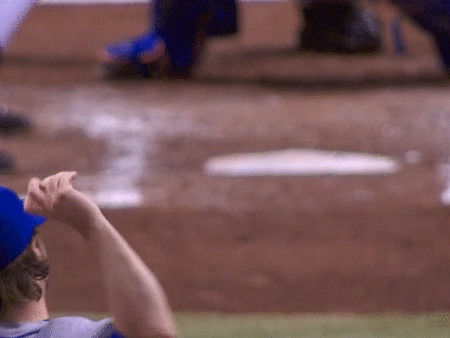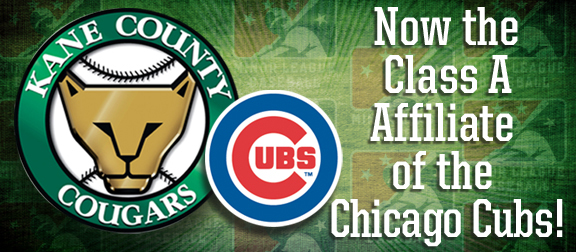. Are any of these guys accomplishments diminished by the steroid era? In some ways, they may be enhanced, no pun intended.
Al Kaline 399. My sense is that Kaline is one of the least famous players on this list. He drew a lot of walks and hit for consistent power, but never got to even 30 homers in a year, or won an MVP. He was a consistently great player, always just a hair behind the very best players of his time. His 23 assists in 1958 are probably the most spectacular number of his career.
Johnny Bench 389. He and Berra could well be the two best catchers ever. Bench hit for his best average, .309, in ’81, a decade after he’d last come near the .300 plateau. And that was the one year after 1967 when he failed to reach double-digits in homers.
Joe DiMaggio 361. Dimaggio’s the only man on this list to have his homer total discounted by war service. He was injured much of his career as well. Joe’s best year wasn’t 1941 with the 56-game hitting streak but 1939, the year Lou Gehrig left baseball. His relatively low counting statistics, hurt by missing 33 games early in the season, obscured a .381 batting average and .671 slugging percentage.
Yogi Berra 358. Berra ranks just behind DiMaggio for home runs. He somehow managed to hit 10 triples in 1948, more than a fifth of his career total. More importantly, he hit 20 or more homers in 13 straight years for the Yankees, and won three MVP awards while doing so. For the years from ’36 through ’63 when Berra and/or DiMaggio were on the field for the Yankees, they won the pennant 20 out of 25 years, and the World Series 15 out of 25 years.
George Brett 317. I believe Brett is the only player ever to lead his league in batting average in three different decades: 1976, 1980, and 1990. Despite getting the Gold Glove and leading the A.L. in slugging percentage and OPS while playing for the World Series champions in ’85, Brett wasn’t voted MVP. In 1979 he had 20 or more triples, homers, and doubles, a very rare slugging trifecta.
Rogers Hornsby 301. Hornsby hit for over a .400 aggregate average in the 1921 through ’25 seasons. He was dominating the N.L. at the same time Ruth was dominating the A.L. His last great year was ’29 with the Cubs: he had nearly 300 runs scored and RBIs combined, garnered an MVP, and posted a .679 slugging percentage. But after that he played in at least part of 8 more seasons while hitting only 24 homers. Hornsby was managing the teams he played for, and they were usually bad. Given that he usually played just a few games a season, you wonder if sometimes Hornsby looked out and thought he could do better than the players he had, so put himself in the lineup.
Rickey Henderson
297. Rickey’s grasp of the all-time steals record is about as complete as Nolan Ryan’s grasp of the all-time strikeouts record. It’d take 50 steals a year for 28 years to come close to his mark of 1406 steals. In the same way, 200 strikeouts a year for 28 years would put a very old pitcher within 114 of Ryan’s record. That’s one of the parallels that make it appropriate for Rickey to
have been Ryan’s 5000th strikeout.
Joe Morgan 268. Morgan was the ’70s version of what Rickey Henderson would be in the ’80s: combining solid batting averages, a hundred or more walks each year, solid power, and a lot of effective base stealing. And like Rickey, he became a vagabond late in his career, playing for five teams in his last six seasons, with diminished speed and power and averages, but still a great ability to draw walks. In fact, Morgan played with Rickey in his last year, 1984, also the last year of Rickey’s first tour with the A’s. And of course they’re both products of Oakland, although Morgan was born in Texas.
Robin Yount 251. Yount came up with the Brewers at age 18 in 1974 and retired after the ’93 season, having stayed with the Brewers throughout his career. His peak homer year was hitting 29 with the slugging Brewers of ’82, still the best Brewers team ever. He got much less All-Star recognition than his longtime teammate, Paul Molitor.
Roy Campanella 242. Campy squeezed his 242 homers into just 10 years, all of them with the Brooklyn Dodgers. In 1953 he put up an offensive performance, with 42 homers, 142 RBIs, a .395 OBP, and .611 slugging percentage, that only Johnny Bench in 1970 (and perhaps Mike Piazza in 1997) has matched among N.L. catchers. Campy was the N.L. MVP in ’51, ’53, and ’55. After having his performance slump in ’56 and ’57, his career ended because of an auto wreck in the offseason before the Dodgers went to Los Angeles. But, he followed them to California and died in the L.A. suburb of Woodland Hills in 1993, still paralyzed from that wreck.
Roberto Clemente 240. Roberto and Kaline were counterparts for nearly all their careers, two men patrolling right field very effectively from the mid-’50s to the early ’70s for teams in industrial cities less than 300 miles from each other. Clemente won one more World Series. Like Kaline, Clemente never hit 30 homers in a year, but over his career had slightly lower offensive numbers and was a slightly worse base stealer. He does beat Kaline in assists, 266 to 170, though he also committed 140 errors to Kaline’s 73.
Paul Molitor 234. Molitor’s peak power years came in 1993 and ’94, when he was past 35. And from ’93 through ’95 he managed to get 54 steals in 58 tries. So like Lou Brock, he did his best base-stealing late in his career. Molitor was not quite 22 when he came up to the Brewers in ’78, so his debut took more time than Yount’s. But he made up for that by staying in the big leagues quite a bit longer. By the way, ex-Brewers slugger Rob Deer ranks just behind Molitor with 230 homers in his career, while striking out 1409 times. Does anyone know whether Deer has the highest ratio of strikeouts to home runs in a career for any slugger?
Pete Rose 160. Rose’s homer count is almost astonishingly low given his 4256 hits. After 1971, he didn’t get more than 10 homers in a single year. In fact, Rose’s power numbers don’t look too different from Cobb’s, except that Cobb hit many more triples. But, Rose has the record for most times on base with 5929. Bonds is second with 5599, but after Bonds, you have to go down to seventh, Hank Aaron, to find another player on the list who hit 500 homers.
Lou Brock 149. Brock’s speed and steals made up for at least part of his relative lack of power. I used to think Brock was a pretty weak hitter, but he hit 21 homers in ’67 and registered double digit homer totals in six of seven years at one point. Put his 3023 hits together with 938 steals, and you can overlook Brock’s lack of walks. Brock leads all players on this list in career strikeouts with 1730, 20 more than Mickey Mantle.
Jackie Robinson 137. He is not famous for home runs. Robinson’s peak offensive year was 1949, with a .342 average, .528 slugging percentage, and over 120 RBIs and runs scored. His abilities on the base paths seem to overshadow the fact that he drew a lot of walks. In fact, the offensive parallels behind himself and Joe Morgan and Rickey Henderson are hard to ignore.
Tony Gwynn 135. After peaking in 1987 with a .370 average and 56 steals, Gwynn’s numbers dropped off a bit, until he hit .394 in ’94. His 119 RBIs in ’97 compare to just one other season with more than 72 RBIs.
Wade Boggs 118. Boggs’ 24 homers in ’87 were a freakish 20 percent of his career total. Gwynn’s counterpart as the leading hitter for average in the late ’80s, Wade did hit 40 or more doubles every year from ’85 through ’91, many of them banging off the Green Monster.
Paul Waner 113. Big Poison spent the first 10 years of his career putting up double-digit triples numbers, but he never got more than 15 homers in a year, playing for the Pirates usually, in the ’20s and ’30s. His 3152 hits average out to 200 hits per season.
George Sisler
102. About the only A.L. counterpart to Ruth for offensive prowess in the early ’20s was Sisler, who spent 1920 through ’22 hitting around .400 for the St. Louis Browns, stealing 40 or so bases each year, and hitting 18 triples each of the three years. He must have been the best player the Browns ever had. An optic nerve infection in ’23 knocked him out for the entire year. When he came back in 1924 his numbers fell off somewhat even as the rest of the league was increasing its offensive production. He still had 2812 hits, 257 of them in 1920, and that got Sisler posthumous attention in ’04, when Ichiro was challenging and then
breaking that record for hits in a single season. Of course, like Hornsby, Sisler played part of his career before 1920. So they both missed out on a few homers playing in those dead ball years.
Rod Carew
92. Of all the batters with
at least 3000 hits, Carew hit the fewest of them for homers. His 92 are just one more than Bob Brenly, six fewer than Tim McCarver, and two fewer than Tony Fernandez. Carew must be one of the very few superb long-time players in the last 90 years with more triples than homers, 112 to 92. He’s certainly one of the greatest players to never get into the World Series.




















